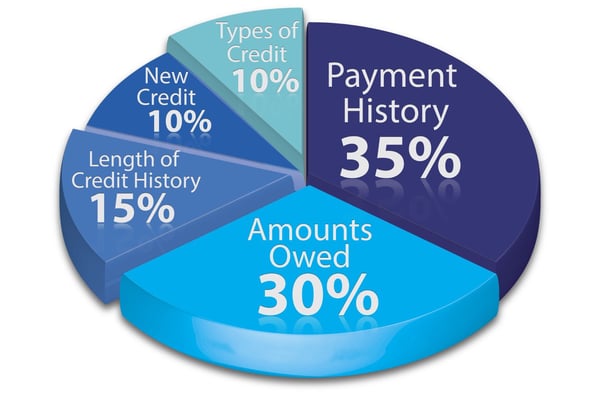 For some, earning rewards through churning is an attractive option. For others, frequent credit applications may mean lower credit scores and credit card debt. In many cases, though, the need for constant credit card payoff can lead to financial strain.
For some, earning rewards through churning is an attractive option. For others, frequent credit applications may mean lower credit scores and credit card debt. In many cases, though, the need for constant credit card payoff can lead to financial strain.Key Points:
- Credit card churning is the opening of new credit card accounts to secure lucrative rewards credit cards and bonus deals during the promotional period.
- Credit card churning can cause your credit scores to drop and limit your credit card account options.
- Credit card churning may also lead to multiple credit card debts.
ClearOne can assist you with professional credit card churning advice and make sure you manage your accounts every month to avoid unnecessary debt and credit score issues.
Credit Card Churning Definition
Credit card churning is the practice of hunting for credit card rewards and bonuses and opening multiple credit cards to take advantage of the deals available. Having secured the credit card churning worth, the credit card “churner” closes the cards, often before incurring the annual fees.
A successful credit card churner can earn free flights, points or miles, vacations, holiday accommodation, and cash this way. Different types of new credit accounts include travel credit cards, business credit cards, student credit cards, and many more.
Credit card issuers frown upon the practice, seeing it as a way to game the system.
Here’s a look at how credit card products and services churning works, its pros and cons, what it takes to successfully churn credit cards, and how the practice impacts credit scores.
How Credit Card Churning Works
The theory behind card churning involves finding good promotional deals, signing up for them, redeeming them by fulfilling the minimum spending requirements, and quitting using the cards or even closing them.
In practice, credit card churning is an effort-intensive undertaking requiring outstanding research, constant monitoring, and some creativity:
- The first step is to get a card with two or more good promotional deals. A “good” deal means an attractive reward/bonus in the currency of your preference (points, earn-a-welcome bonus, best-bank bonuses, frequent flyer miles, best-cash-back options, etc.). Credit card companies’ rewards should also come with advantageous terms such as the lack of a requirement to keep the cards open after you secure the bonuses, promotional annual fees, etc.
- Some churners find the best credit cards, compare credit card deals, and apply for several cards at once. Others space out their applications to cover a few months.
- Churners then secure the best rewards by fulfilling the spending requirements.
- Finally, they cancel the card or stop using it before they incur an annual fee or credit card interest, and keep opening new credit accounts over and over.
Credit Card Debt and the Pros and Cons of Credit Card Churning
Credit card churning seems like an attractive proposition for some credit card holders because:
- It is an efficient way to get more rewards than any single credit card ever would offer.
- The promotional terms make it possible for churners to earn rewards much faster than they could on an average credit card.
- Credit card churners enjoy the freedom of canceling cards after they earn the bonus. This way, they don’t get stuck with lines of credit that may feature a subpar reward system for everyday spending.
Naturally, credit card issuers have caught on to the practice and taken steps to make it more difficult for churners to game the system.
- To limit credit card churning, some credit card issuers have instituted limits on how many credit cards you can open within a given period of time. Other measures include the limiting of bonuses to one per user per lifetime or one bonus per credit card.
- If you can’t afford the spending requirements, you risk landing in credit card debt or taking out a loan to try to battle bad credit, damaging your credit score even more. If your churning attempts have landed you in debt trouble, seek credit card relief Contact a ClearOne Certified Debt Specialist to find out what options you have.
- Although some credit card issuers waive annual fees as part of their promotional offers, such fees may put a significant dent in the rewards/bonuses.
- The repeated applications for credit cards may negatively impact credit scores.
- Applying frequently for credit may also increase your chances of being turned down.
- Do not increase your spending to fulfill your reward/bonus requirements. Such an approach is often a path to serious debt. Seek credit card relief as soon as possible if you are in trouble.
The Impact of Churning on your Credit Scores and Credit Card Debt

Continuous credit card sign-up is a risky financial move. If you miss a few details here and there, you could find yourself in credit card debt in the blink of an eye. Churning also impacts your credit scores.
There are five factors that make up your credit score. According to Experian, your payment history accounts for 35% of your score, followed by the amount you owe at 30%, the length of your credit history at 15%, new credit at 10%, and the types of credit you have at 10%.
Credit card churning can thus negatively impact your credit score in several ways:
- It affects your credit utilization ratio, which falls into the category of “Amounts Owed.” Churning can make your utilization ratio go down, but if you fail to make your payments on time, it can also sink you into debt.
- If you forget to pay a bill on time, churning can upend your payment history, which accounts for 35% of your credit score.
- Closing credit cards can affect your credit utilization and the average age of your accounts, which impacts the “New Credit” category of your credit score.
- Lenders may also consider frequent credit card applications as a sign of financial distress.
Pros and Cons of Credit Card Churning
Credit card churning can be an easy way to earn rewards. And while it’s possible to find the best rewards offers and low fee credit cards to earn valuable perks, the practice can get tricky. For example, credit card companies may make it harder to get approved for new accounts if you open too many too fast. Additionally, if you are not careful with managing your expenses, the cost of living could catch up, and those rewards may simply not be worth the hassle.
If you have tried your hand at credit card churning and find yourself struggling with credit card debt, we can help. Contact a ClearOne Advantage Certified Debt Specialist at 866-481-1597 to learn what your credit card relief options are and get a free savings estimate today!





